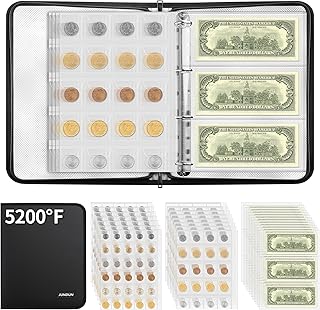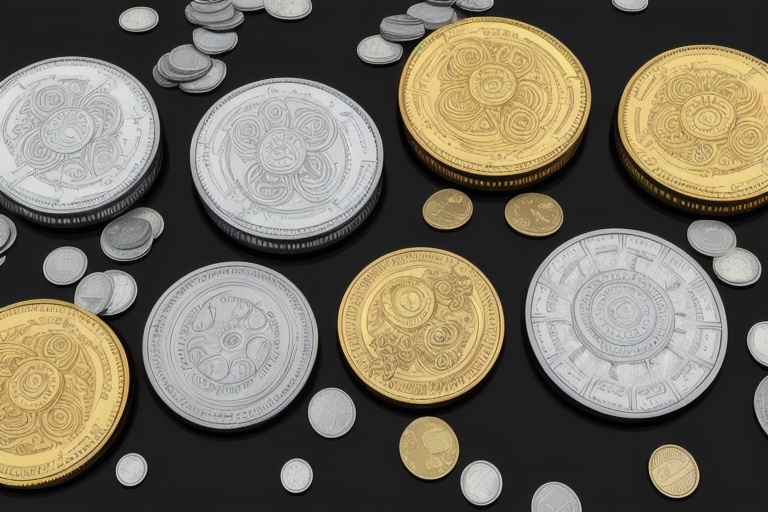Penny coin collecting has risen to be a favored pastime within the United States, captivating a diverse audience with its accessibility and historical significance. The humble penny, often overlooked in day-to-day transactions, finds a place of honor among numismatists for its intricate backstory and the remarkable variety seen in its mintages over the centuries. As an entry point for many into the world of numismatics or a complex field of study for the seasoned collector, understanding the nuances of penny variety and valuation is integral to engaging with this segment of coin collecting successfully.
Penny coin collecting has risen to be a favored pastime within the United States, captivating a diverse audience with its accessibility and historical significance. The humble penny, often overlooked in day-to-day transactions, finds a place of honor among numismatists for its intricate backstory and the remarkable variety seen in its mintages over the centuries. As an entry point for many into the world of numismatics or a complex field of study for the seasoned collector, understanding the nuances of penny variety and valuation is integral to engaging with this segment of coin collecting successfully.
The Historical Tapestry of the U.S. Penny
The journey of the U.S. Penny, or the "cent," as it is officially recognized, is a tale woven deeply into the fabric of American currency. Its inception dates back to 1793, with its dimensions originally matching those of contemporary dollar coins. However, in 1857, the penny underwent a transformation, taking on the size and shape familiar to us today. Marking itself as the lowest denomination of physical currency, valued at one one-hundredth of a dollar, the penny became the smallest circulating unit following the discontinuation of the half-cent in the same year.
Deriving its colloquial name 'penny' from the British denomination, the earliest U.S. cent—christened the Fugio or Franklin cent—boasts a creation by Benjamin Franklin. Despite only a single year of production, this copper coin is steeped in history and commands significant interest and value among collectors due to its scarcity.
The passage of time has seen a variety of pennies etched with the marks of their times. From the brief mintage of the Flying Eagle cent (1857-1858) to the longer-running Indian Head cents (1859-1909) and the iconic Lincoln Wheat pennies (1909-1958), each series offers a snapshot of American cultural and economic evolution. Not to be overlooked are the Lincoln Pennies minted since 1959, which continue to garner attention due to their evolving designs and attributes reflective of contemporary America.
The Value of the Penny: Rare Finds and Wise Investments
When it comes to value, not all pennies are created equal. Beyond their nominal worth, there exists a pantheon of cents that carry values magnitudes higher than their face value. Below are ten of the most valuable pennies known:
- 1943 D Bronze Wheat Penny — Collectors may pay between $800,000 and $2,000,000 for this rarity.
- 1944 S Steel Wheat Penny — Its value ranges from $700,000 to $1,000,000.
- 1943 S Bronze Wheat Penny — This coin boasts a value of over $500,000.
- 1943 Bronze Wheat Penny — Enthusiasts might spend over $300,000 for this coin.
- 1958 P DDO Wheat Penny — Depending on its condition, it can fetch between $100,000 and $200,000.
- 1944 D Steel Wheat Penny — This coin comes with a potential price tag exceeding $60,000.
- 1944 P Steel Wheat Penny — Collectors may invest over $50,000 for this specimen.
- 1888 Last 8 Over 7 Indian Head Cent — This variation is valued between $24,000 and $38,000.
- 1922 D No D Strong Reverse Wheat Penny — This one ranges from $12,000 to $30,000 in value.
- 1856 Flying Eagle Penny — Its worth sits between $18,000 and $24,000.
These penny protagonists of the numismatic stage are highly coveted for their rarity and historical importance, often significantly increasing the overall value of collections they join. Rarity, condition, and market demand remain the key factors influencing the worth of any penny, underlining the necessity for consultation with experts or usage of dependable reference materials for accurate valuation.
Trading and Transacting: The Marketplace for Pennies
For those looking to trade in pennies, modern times offer multiple online avenues. Platforms such as Coinsforsale.com and eBay serve as bustling virtual marketplaces, connecting buyers with sellers across the globe. Such outlets provide a broad spectrum of coins, from the commonplace to the exceedingly rare. It is imperative, nevertheless, for participants to approach online transactions with due diligence to confirm the authenticity of high-value items.
Collecting as a Gateway to History and Education
Engaging in coin collecting transcends beyond the hobbyist's pursuit; it becomes an educational odyssey through the annals of history and the intricacies of monetary systems. Pennies, with the stories they tell and the chronology they encompass, occupy an endearing niche within the community of those who seek to preserve pieces of the past. The hobby caters to all, from those just embarking on their numismatic journey to the adept hunters of the elusive and rare.
As custodians of a rich numismatic legacy, collectors undertake the role of storytellers, each penny a narrative of cultural, economic, and societal shifts. A coin roll hunt or a careful examination through a magnifier not only provides the thrill of discovery but also serves as a bridge connecting us to the miles and moments traversed by these small embodiments of Americana.
In embracing the prospect of penny coin collecting, we each partake in a continuous story, keeping the legacy alive and contextual for generations to come. Whether aiming to complete a collection, invest wisely, or simply enjoy the hobby, join us in the celebration of detail, patience, and historical discovery that penny collecting brings.
Information for this article was gathered from the following source.




